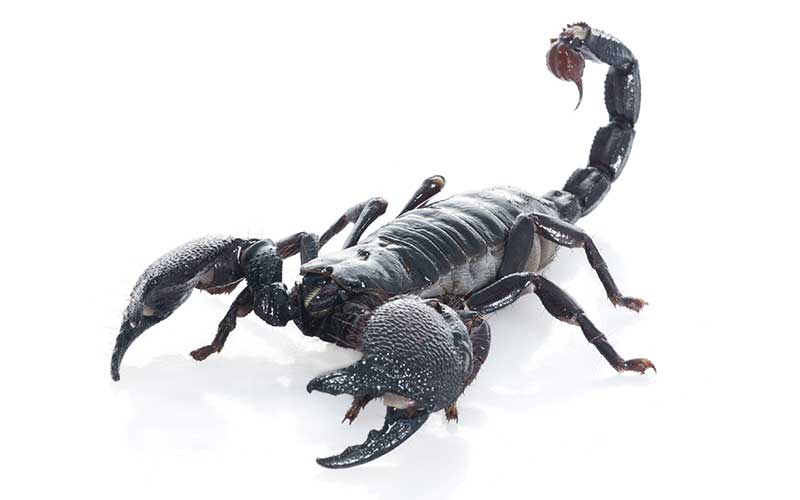Scorpions are active night hunters with developed abilities to achieve their goal. The natural environment in which they inhabit allows them to have a broad range of prey that provides them with the necessary nutrients to survive.
Some in the comprehensive list of alternatives that most small or medium sized scorpions have to feed on are several types of insects and spiders, such as worms, centipedes, woodchucks, termites, crickets, flies, beetles, and snails. The big species can capture greater prey such as rodents, frogs, lizards and even some types of snakes.
An interesting fact about scorpions is that they can withstand several months without consuming food. Some scorpions which inhabit arid regions have survived without food for up to 12 months, as long as they have access to water sources. They do not feed daily like us, but usually, they look for food every two or three weeks.
Although they have the same resources, not all hunt in the same way. Sometimes the size and strength of adults are enough to kill their prey without having to sting them; they only tear the body parts with the help of their pincers. Youngs, on the other hand, do rely on injecting the poison to knock down their opponent. As an example, the adults and young of the emperor scorpion (Pandinus imperator) perform these two different procedures to catch their prey.
They do not feed daily like us, but usually, they look for food every two or three weeks.
Scorpions hold their victims with their mighty pincers and begin to crush their body parts to minimize their resistance. Once the scorpion firmly holds its prey, bends its tail and sting it in any body part, usually in the head. Seconds or minutes later, the prey is immobilized and dies.
If the victim is an insect with delicate body parts easy to detach, the scorpion is responsible for tearing it with its pincers. The rest of the body is impossible to digest in a solid state, so the scorpion begins to fill it with digestive juices formed by enzymes that dissolve all the tissues until they become a semiliquid substance. After that, the food is ready to be sucked through their small mouth. This whole process can take about an hour. The scorpion abandons the hard parts, and it does not invest more energy trying to soften them.
Some species hunt by ambushes; they stay motionless beneath stones, wood, bark, and other objects on the ground that allow them to conceal or camouflage until the prey is close enough to catch it in an instantaneous movement that takes fractions of a second. They can also chase down briefly a detected victim and attack at the right moment. Scorpions do not go out looking for food; their success depends on waiting. They do not have excellent vision, but through their sensory hairs, they can know what kind of animal is approaching and how far is it from them.
The young are unable to hunt because their soft and defenseless body, as well as the lack of lethal poison to submit their prey, therefore, they cannot obtain their food by themselves. Therefore, scorplings climb to the abdomen of their mother and absorb nutrients from a yolk sac until they have their first molt.
Cannibal behavior of mothers to their offspring is also possible.
Cannibalism
Cannibalism is common among scorpions. The battles between individuals many times end up with the death of one of the contenders, and the triumphant prepares to eat it, leaving only the tail.
Researchers have observed that in confrontations of the European Yellow-tailed Scorpion (Euscorpius flavicaudis), the largest competitor always wins, while the small which always loses, dies eaten.
Although not frequently, this also happens after mating. In this case, the female is the one that kills and eat the male. Cannibal behavior of mothers to their offspring is also possible when they do not have anything else to eat.
Sources:
Animals, a visual encyclopedia. Second edition. Smithsonian 2012.
http://kids.nationalgeographic.com/animals/scorpion/#scorpion-tail-up.jpg
http://animals.nationalgeographic.com/animals/bugs/scorpion/
http://www.ucmp.berkeley.edu/arthropoda/arachnida/scorpiones.html
https://en.wikipedia.org/wiki/Scorpion
BioExpedition Publishing © 2017.







